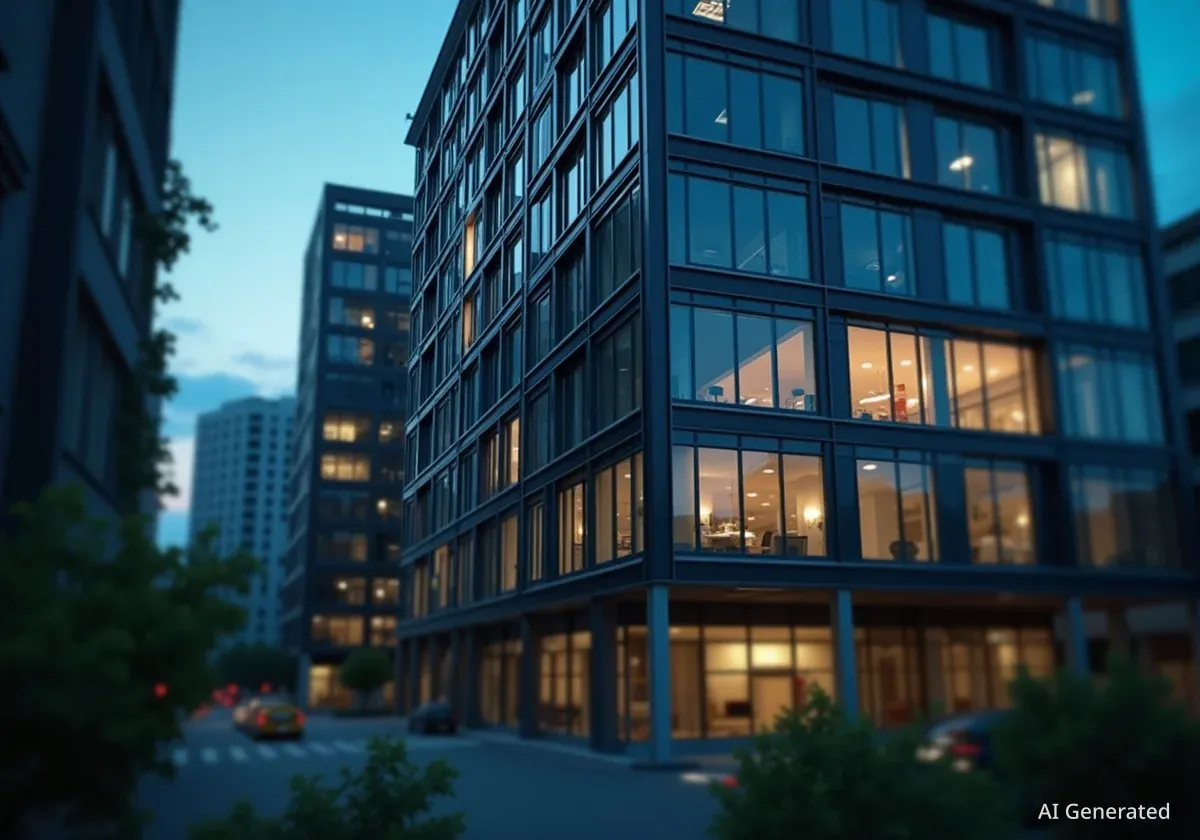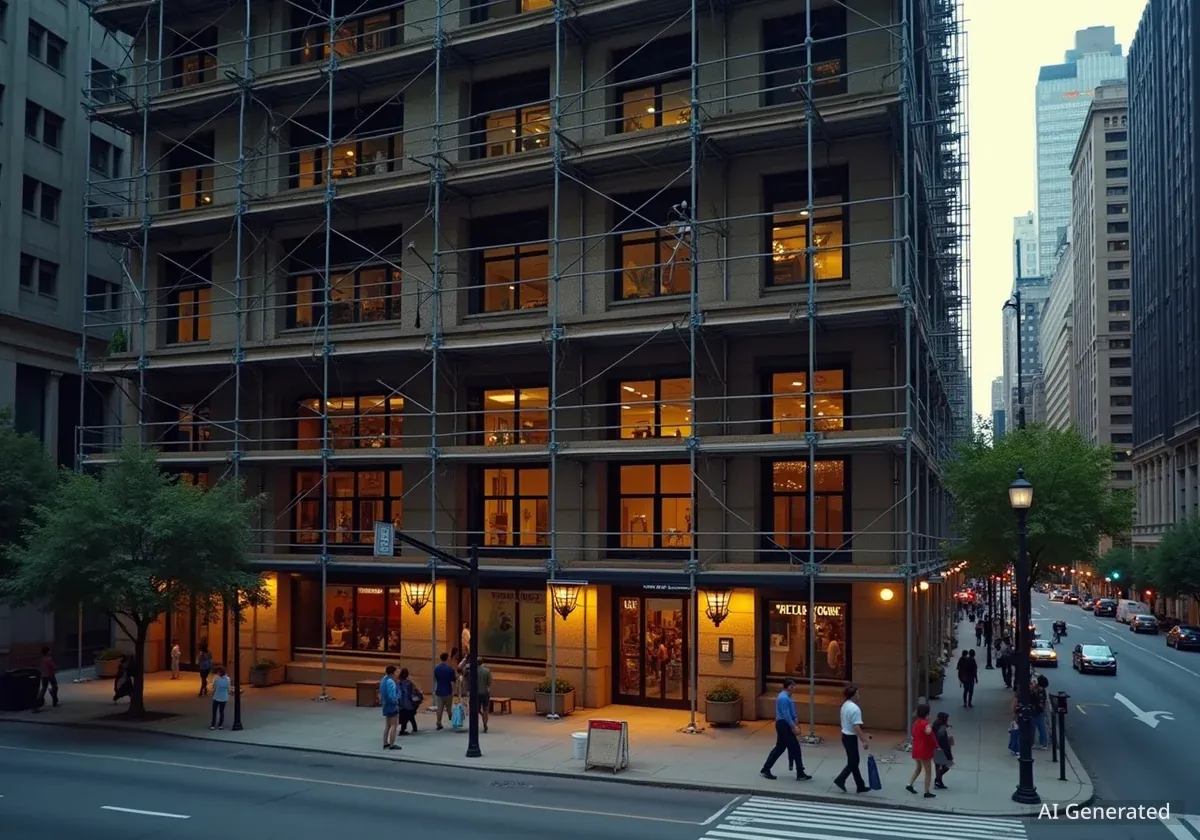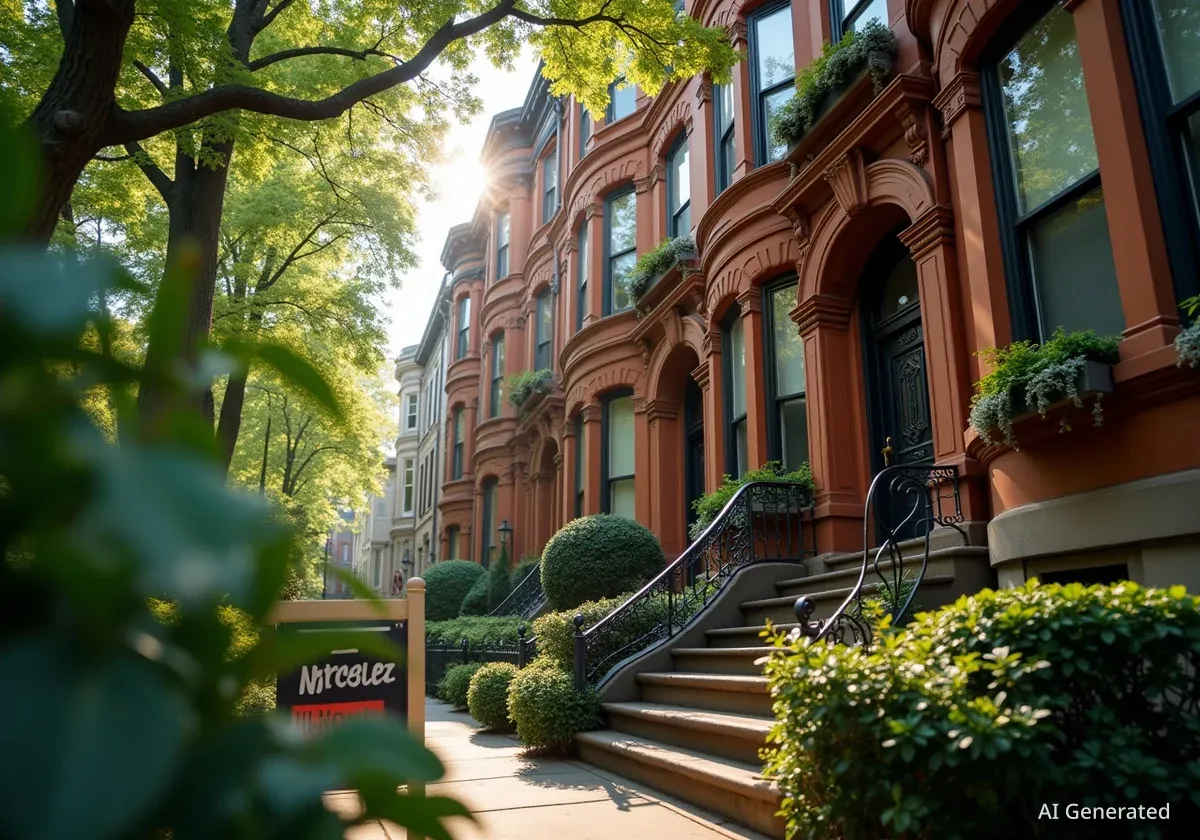The commercial real estate landscape in the San Francisco Bay Area is undergoing a significant transformation as major corporations reevaluate their office space needs. This shift, driven by remote work trends and corporate mergers, is creating a mixed environment of high vacancy rates in some areas and strategic redevelopment in others, particularly in suburban markets like Concord and San Ramon.
Key Takeaways
- Major financial institutions and corporations are significantly reducing their office footprints in Bay Area suburbs.
- Concord's commercial vacancy rate has climbed to 31.4%, well above the regional average of 21.3%.
- In San Ramon, developers are repurposing former corporate campuses into mixed-use environments to adapt to new market demands.
- Corporate consolidation, such as BMO Bank's acquisition of Bank of the West, is a key driver of large-scale space reductions.
Vacancy Rates Climb in Concord as Banks Reshuffle
The suburban city of Concord is facing a challenging commercial real estate market, with its office vacancy rate soaring to 31.4%. This figure is substantially higher than the regional average of 21.3%, highlighting the concentrated impact of corporate adjustments in the area.
Recent leasing decisions from major financial institutions illustrate this trend. While Wells Fargo is in the process of selling its San Francisco headquarters, it has recommitted to its presence in Concord, becoming the city's largest commercial tenant. This move provides a degree of stability to the local market.
However, this stability is offset by downsizing from other key players. Bank of America recently reduced its office space in the city. According to reports from the San Francisco Business Times, this combination of moves has contributed directly to the elevated vacancy rate, signaling a volatile period for the local office sector.
The Post-Pandemic Effect on Suburban Offices
Before 2020, suburban office parks were often seen as stable, long-term investments for large corporations. The widespread adoption of hybrid and remote work has fundamentally altered this view. Companies now require less physical space, leading them to consolidate operations and shed excess square footage, a trend clearly visible in markets like Concord.
San Ramon Navigates Major Corporate Departures
San Ramon, another key Bay Area business hub, is experiencing similar pressures. The city is grappling with the decision by Chevron to place 400,000 square feet of its office space up for sublease. This move is part of the energy giant's ongoing strategy to relocate more of its operations to Houston, Texas.
The owner of the prominent Bishop Ranch development, Sunset Development Co., has been proactive in managing this transition. The company purchased back the 90-acre Chevron Park campus and is already moving forward with redevelopment plans in collaboration with the city of San Ramon. The goal is to transform the single-use corporate park into a more dynamic, mixed-use community.
Adapting to a Fluid Tenant Landscape
The story of San Ramon's office market is one of both wins and losses, reflecting the nimble approach required by today's developers. For example, Sunset Development Co. successfully relocated John Muir Health into a larger, modern facility, doubling the health provider's square footage. This move was part of a broader plan to redevelop an older building for residential use.
Dramatic Space Reductions by Key Tenants
Several major tenants have drastically cut their office space in San Ramon, showcasing the broader downsizing trend:
- Robert Half: The staffing firm, which Sunset Development had attracted from a neighboring business park, reduced its footprint from 250,000 square feet to just 73,000 square feet.
- BMO Bank: Following its acquisition of Bank of the West, the bank slashed its leased space from 276,000 square feet to a mere 30,000 square feet, a reduction of nearly 90%.
These significant reductions underscore the impact of corporate consolidation and changing work models. Mergers and acquisitions often lead to redundant office space, which new parent companies are quick to eliminate to cut overhead costs.
The Future Is Mixed-Use Development
The actions taken by Sunset Development Co. in San Ramon point toward a new model for suburban business districts. Instead of relying solely on large corporate tenants to fill massive office parks, developers and city officials are embracing a work/life/play environment.
This strategy involves integrating residential, retail, and recreational spaces alongside traditional offices. By creating a vibrant community where people can live, work, and socialize, developers aim to build a more resilient and attractive destination that is less dependent on the fluctuating space needs of a few large companies.
The shift from pure business parks to integrated communities is a strategic pivot. It acknowledges that the era of the sprawling, isolated corporate campus is giving way to a more holistic and community-focused approach to urban planning.
This foresight may prove crucial for the long-term health of areas like Bishop Ranch. By diversifying their real estate portfolio, they are better positioned to weather the volatility of the commercial office market and adapt to the evolving demands of both businesses and residents.
As the Bay Area continues to navigate these economic shifts, the experiences of Concord and San Ramon serve as important case studies. They demonstrate the challenges posed by corporate downsizing while also highlighting the innovative strategies being deployed to redefine the purpose and future of suburban commercial real estate.





